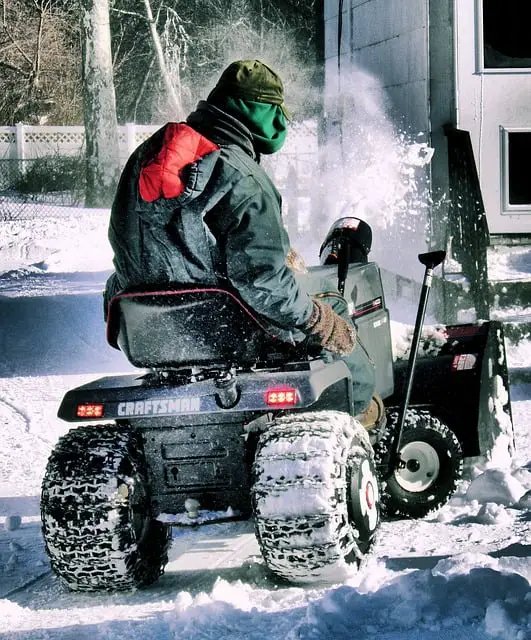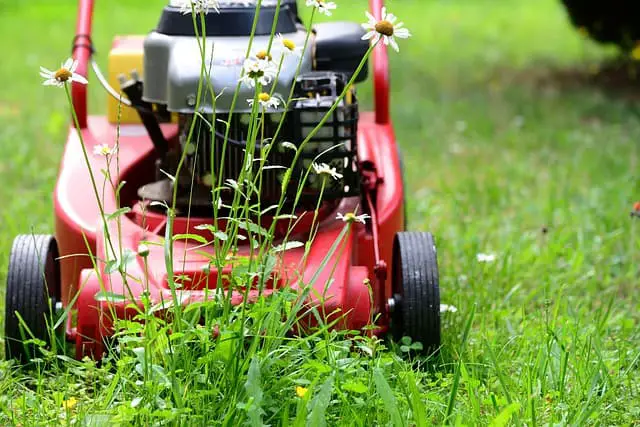A great lawn requires a lot of maintenance. Of course, if you don’t employ essential lawn care methods like timely fertilizer, watering, and mowing a lawn using various mowers like riding mowers, electric mowers, and reel mowers. However, putting all other considerations aside, ensuring that your lawn’s subsoil receives enough nutrients is essential. And aerating your grass is the best way to achieve that!
The ability of air, water, and other nutrients to quickly penetrate densely populated grass and thatch makes lawn aeration essential for a healthy lawn. This article is ideal for you if you are new to lawn aeration. The information you need about lawn aeration is provided here, along with some helpful advice.
Lawn Aeration Basics
Aeration includes making tiny holes in the soil to let air, water, and nutrients reach the grassroots. As a result, the roots develop deeper, and the lawn becomes stronger and more active. Aerating is primarily done to reduce soil compaction. As old carbon dioxide is expelled, allowing a place for fresh, new oxygen to enter, air movement is crucial. Grass aeration also lessens lawn compaction, the primary cause of moss, and helps to cut through accumulated thatch in lawns that require a lot of attention.
Compacted soils hinder the normal circulation of air, water, and nutrients within the soil by packing too many solid particles into a given volume or area. Additional lawn thatch or substantial organic material buried beneath the grass’s top might further deprive the roots of these vital nutrients.
Aeration is done when the soil on a lawn becomes compacted from heavy foot traffic and mowing. When soil is compacted, water, air, and fertilizer cannot reach the soil’s root zone. Additionally, soil compaction hinders roots from expanding deeply, which lowers the grass’s capacity to create food through photosynthesis.
Pros of Lawn Aeration
The first advantage of the tiny holes created by aeration is the elimination of weeds. There are various disadvantages to having weeds in your yard. To begin with, weeds in a well-kept garden might spread quickly and become unpleasant.
The moisture, food, heat, and food your flora needs to survive and develop big, strong and healthy may all be absorbed by these enormous weeds.
Aeration creates tiny holes that serve to dislodge the soil. Your grass can absorb air and water by loosening the soil. When air and water seep beneath the surface of your lawn, the roots will have an easier time draining. Your grass will get stronger, healthier, and grow more quickly.
This lawn maintenance method, however, might be challenging if you don’t have and employ the right tool. If you have and utilize the right tool, aerating your lawn by hand or any tool will be simpler and faster. I’ll describe an aerating method using a garden fork and how to aerate a lawn with a fork.
How to Aerate a Lawn with A Fork?
Following scarification, aerate your lawn every two to three years in the fall. To aerate is to “bring air into.” With your garden fork, make holes in the ground to allow water, nutrients, carbon dioxide, and oxygen to pass through and reach the root zone of your lawn. Repeat every 6 inches across the garden, pushing the fork in approximately 4-5 inches deep and pulling it out a little. You have two options: you can leave the holes empty, or, especially if you’re trying to enhance the soil, you can rake in a suitable mixture of sand for drainage, compost for fertility, and leaf mold for water retention.
Once your grass has been scarified, which can be done in the spring or the fall, your grass can be aerated concurrently. You should aerate your grass to break up any pans or soil compaction and to reintroduce air and nutrients to the soil. After aerating your grass, you can fill the holes with sand and compost or leave them empty.
A regular garden fork will work just fine to aerate tiny lawns. Insert it between four and five inches deep, then pull it back until the grass begins to rise. Pull it back out, advance by about six inches, and repeat the process identically. If your lawn is large, you can hire a mechanized aerator to do the work for you. You only need a regular garden fork; stick it straight in the ground and raise it.
How Long Will It Take to Aerate a Lawn with A Fork?
Before using any aeration or coring technique, thoroughly water the sod. Before the winter’s chill or the summer’s scorching heat, give yourself four weeks to heal. Additionally, you must wait four weeks if you want to be overseeded. After that, top dress the area with high-quality soil and plant suitable seeds for your region. Utilize a roller, which you can also rent, to compact the area. These large, wheeled instruments compact the ground and guarantee seed contact with the soil. They can also assist in leveling up uneven lawns. Unfortunately, the procedure may also create compaction once more, necessitating that you aerate the lawn once more shortly.
Is It Difficult to Aerate the Lawn with The Fork?
You could aerate your lawn with the help of a fork. It is comparable to spike aeration in several ways. It is an efficient way to aerate your lawn because it penetrates compacted soils effectively to loosen the particles, and if you already own a fork, you can utilize that instead of spending more money on new equipment. However, if your lawn is particularly huge, the process will take a long time and be very tedious. A short, compact handle made of wood or rubber is a common feature of forks used for gardening tasks. Following this handle is a substantial pole. After that, this long rod ends with a pair of tines.
What to Do when The Fork Is Not Enough to Aerate the Lawn?
For many small household lawns, a fork may be sufficient, but for larger lawns, a fork simply won’t cut it; instead, a larger lawn needs the use of a specialist aerating instrument. These can include tow aerators or push spike aerators, which are manual devices that look like forks but have longer tines or greater diameters. If your soil is thick clay, you may need to utilize plug aeration rather than spike aeration, which will take tiny cores of soil from the ground as it moves across the lawn.


